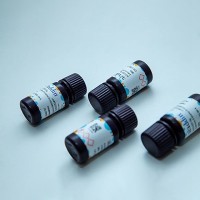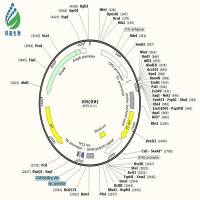A Comprehensive Guide to Sleeping Beauty–Based Somatic Transposon Mutagenesis in the Mouse
互联网
- Abstract
- Table of Contents
- Materials
- Figures
- Literature Cited
Abstract
Recent advances in whole genome analyses made possible by next?generation DNA sequencing, high?density array comparative genome hybridization (aCGH), and other technologies have made it apparent that cancers harbor numerous genomic changes. However, without functional correlation or validation, it has proven difficult to determine which genetic changes are necessary or sufficient to produce cancer. Thus, it is still necessary to perform unbiased functional studies using model organisms to help interpret the results of whole genome analyses of human tumors. To this end, a Sleeping Beauty (SB) transposon?based mutagenesis technology was developed to identify genes that, when mutated, can cause cancer. Herein a detailed methodology to initiate and carry out an SB transposon mutagenesis screen is described. Although this system might be used to identify genes involved with many cellular phenotypes, it has been primarily implemented for cancer. Thus, SB transposon somatic cell screens for cancer development are highlighted. Curr. Protoc. Mouse Biol. 1:347?368 © 2011 by John Wiley & Sons, Inc.
Keywords: Sleeping Beauty; cancer; mutagenesis screen; transposon; mouse
Table of Contents
- Introduction
- Strategic Planning
- Basic Protocol 1: Breeding and Genotyping a Cohort of Mice Undergoing Somatic Transposon Mutagenesis
- Basic Protocol 2: Verifying Transposase Expression and Transposon Mobilization
- Alternate Protocol 1: Transposon PCR Excision
- Basic Protocol 3: Identification of Transposon Insertion Sites by LM‐PCR and High‐Throughput Sequencing
- Reagents and Solutions
- Commentary
- Literature Cited
- Figures
- Tables
Materials
Basic Protocol 1: Breeding and Genotyping a Cohort of Mice Undergoing Somatic Transposon Mutagenesis
Materials
Basic Protocol 2: Verifying Transposase Expression and Transposon Mobilization
Materials
Alternate Protocol 1: Transposon PCR Excision
Materials
Basic Protocol 3: Identification of Transposon Insertion Sites by LM‐PCR and High‐Throughput Sequencing
Materials
|
Figures
-
Figure 1. Outline of crosses necessary to generate experimental class animals undergoing transposon mutagenesis. (A,B ) Experimental class animals for screens utilizing no predisposing background or a non‐conditional background are generated by breeding animals homozygous for both R26‐LSL‐SB11 and the T2/Onc concatemer to animals that are heterozygous for the Cre (TSP‐Cre) of interest or homozygous for the non‐conditional predisposing background and heterozygous for the TSP‐Cre , respectively. (C ) Experimental class animals for screens utilizing a conditional predisposing background are generated by breeding animals homozygous for both R26‐LSL‐SB11 and the conditional predisposing background to mice homozygous for the T2/Onc concatemer and heterozygous for the TSP‐Cre of interest. View Image -
Figure 2. An example of PCR genotyping results for Cre recombinase, T2/Onc , and R26‐LSL‐SB11 . Cre genotyping primers should produce a product of 482 bp. The R26‐LSL‐SB11 genotyping PCR utilizes a three‐primer PCR to amplify both the wild‐type (WT) R26 and the knock‐ in R26‐LSL‐SB11 alleles in a single reaction with wild type producing a 420‐bp product and the SB11 knock‐in producing a 266‐bp product. T2/Onc genotyping primers should produce a product of 264 bp. View Image -
Figure 3. Shown are example photomicrographs of immunohistochemical results for the SB transposase protein counterstained with hematoxylin. Staining of tumor cells expressing SB show robust brown horseradish peroxidase staining that is most pronounced in the nucleus where the protein is localized. Negative control staining lacking primary antibody should be devoid of brown horseradish peroxidase staining but still show counterstaining with hematoxylin. View Image -
Figure 4. An example of a PCR excision assay results from a panel of transposon mutagenesis induced tumors. Tumors positive for transposon mobilization should produce a 225‐bp product. If no transposition has occurred, then a 2.2‐kb product should be observed, as shown for tumor 2, which was negative for the SB transposase and developed as a background tumor in this experiment. Some tumors may be composed of a mix of cells positive and negative for transposition and will thus produce both the 225‐bp and 2.2‐kb products, as shown in tumor 5 and 6. View Image -
Figure 5. Flowchart outlining the molecular details at each step of the ligation‐mediated PCR (LM‐PCR) procedure leading to the final products that contain all the necessary elements for high‐throughput Illumina sequencing to identify the genomic site of transposon integrations. View Image -
Figure 6. An example of ligation‐mediated PCR (LM‐PCR) results from a panel of tumors induced by transposon mutagenesis. LM‐PCR products should appear as smears as they contain many different sized products that correspond to many different amplified transposon‐genomic DNA junction products. Wild‐type mouse DNA and water should not produce PCR products of any kind. View Image
Videos
Literature Cited
| Literature Cited | |
| Collier, L.S., Carlson, C.M., Ravimohan, S., Dupuy, A.J., and Largaespada, D.A. 2005. Cancer gene discovery in solid tumours using transposon‐based somatic mutagenesis in the mouse. Nature 436:272‐276. | |
| Collier, L.S., Adams, D.J., Hackett, C.S., Bendzick, L.E., Akagi, K., Davies, M.N., Diers, M.D., Rodriguez, F.J., Bender, A.M., and Tieu, C. 2009. Whole‐body sleeping beauty mutagenesis can cause penetrant leukemia/lymphoma and rare high‐grade glioma without associated embryonic lethality. Cancer Res. 69:8429. | |
| Dupuy, A.J., Akagi, K., Largaespada, D.A., Copeland, N.G., and Jenkins, N.A. 2005. Mammalian mutagenesis using a highly mobile somatic sleeping beauty transposon system. Nature 436:221‐226. | |
| Dupuy, A.J., Rogers, L.M., Kim, J., Nannapaneni, K., Starr, T.K., Liu, P., Largaespada, D.A., Scheetz, T.E., Jenkins, N.A., and Copeland, N.G. 2009. A modified sleeping beauty transposon system that can be used to model a wide variety of human cancers in mice. Cancer Res. 69:8150. | |
| Frank, D.N. 2009. BARCRAWL and BARTAB: Software tools for the design and implementation of barcoded primers for highly multiplexed DNA sequencing. BMC Bioinformatics 10:362. | |
| Gallagher, S.R. and Desjardins, P.R. 2006. Quantitation of DNA and RNA with absorption and fluorescence spectroscopy. Curr. Protoc. Mol. Biol. 76:A.3D.1‐A.3D.21. | |
| Gondo, Y. 2008. Trends in large‐scale mouse mutagenesis: From genetics to functional genomics. Nat. Rev. Genet. 9:803‐810. | |
| Huss, J.W., Lindenbaum, P., Martone, M., Roberts, D., Pizarro, A., Valafar, F., Hogenesch, J.B., and Su, A.I. 2010. The gene wiki: Community intelligence applied to human gene annotation. Nucleic Acids Res. 38:D633. | |
| Ivics, Z., Hackett, P.B., Plasterk, R.H., and Izsvák, Z. 1997. Molecular reconstruction of sleeping beauty, a Tc1‐like transposon from fish, and its transposition in human cells. Cell 91:501‐510. | |
| Jonkers, J. and Berns, A. 1996. Retroviral insertional mutagenesis as a strategy to identify cancer genes. Biochim Biophys Acta 1287:29‐57. | |
| Kallioniemi, A. 2008. CGH microarrays and cancer. Curr. Opin. Biotechnol. 19:36‐40. | |
| Keng, V.W., Villanueva, A., Chiang, D.Y., Dupuy, A.J., Ryan, B.J., Matise, I., Silverstein, K.A.T., Sarver, A., Starr, T.K., and Akagi, K. 2009. A conditional transposon‐based insertional mutagenesis screen for genes associated with mouse hepatocellular carcinoma. Nat. Biotechnol. 27:264‐274. | |
| Mikkers, H. and Berns, A. 2003. Retroviral insertional mutagenesis: Tagging cancer pathways. Adv. Cancer Res. 88:53‐99. | |
| Mohr, S., Leikauf, G.D., Keith, G., and Rihn, B.H. 2002. Microarrays as cancer keys: An array of possibilities. J. Clin. Oncol. 20:3165. | |
| Rad, R., Rad, L., Wang, W., Cadinanos, J., Vassiliou, G., Rice, S., Campos, L.S., Yusa, K., Banerjee, R., and Li, M.A. 2010. PiggyBac transposon mutagenesis: A tool for cancer gene discovery in mice. Science 330:1104. | |
| Rahrmann, E.P., Collier, L.S., Knutson, T.P., Doyal, M.E., Kuslak, S.L., Green, L.E., Malinowski, R.L., Roethe, L., Akagi, K., and Waknitz, M. 2009. Identification of PDE4D as a proliferation promoting factor in prostate cancer using a sleeping beauty transposon‐based somatic mutagenesis screen. Cancer Res. 69:4388. | |
| Soriano, P. 1999. Generalized lacZ expression with the ROSA26 cre reporter strain. Nat. Genet. 21:70‐71. | |
| Starr, T.K., Allaei, R., Silverstein, K.A.T., Staggs, R.A., Sarver, A.L., Bergemann, T.L., Gupta, M., O'Sullivan, M.G., Matise, I., and Dupuy, A.J. 2009. A transposon‐based genetic screen in mice identifies genes altered in colorectal cancer. Science 323:1747. | |
| Starr, T.K., Scott, P.M., Marsh, B.M., Zhao, L., Than, B.L.N., O'Sullivan, M.G., Sarver, A.L., Dupuy, A.J., Largaespada, D.A., and Cormier, R.T. 2011. A sleeping beauty transposon‐mediated screen identifies murine susceptibility genes for adenomatous polyposis coli (apc)‐dependent intestinal tumorigenesis. Proc. Natl. Acad. Sci. 108:5765. | |
| Uren, A.G., Kool, J., Berns, A., and Van Lohuizen, M. 2005. Retroviral insertional mutagenesis: Past, present and future. Oncogene 24:7656‐7672. | |
| Voytas, D. 2000. Agarose gel electrophoresis. Curr. Protoc. Mol. Biol. 51:2.5A.1‐2.5A.9. |







